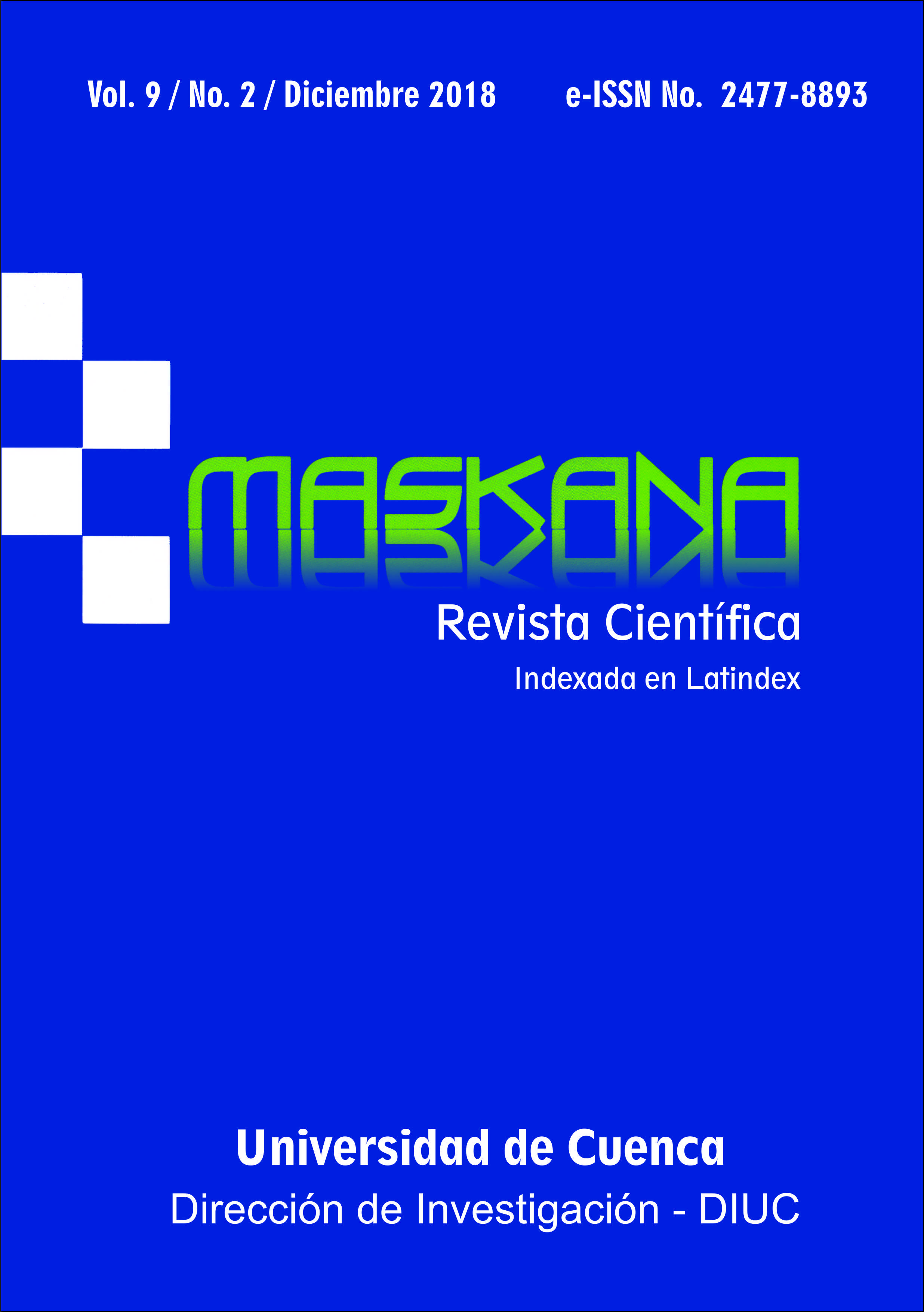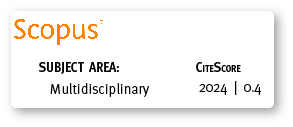Modelado unidimensional no estacionario de un río de alta montaña en el sur de Ecuador
DOI:
https://doi.org/10.18537/mskn.09.02.08Palabras clave:
modelación de ríos 1D, HEC-RAS, Mike11, ríos de alta montaña, EcuadorResumen
Las inundaciones son una causa severa de muertes y pérdidas económicas. Para prevenir, mitigar y reducir los riesgos por inundaciones y sus consecuencias, los modelos hidráulicos permiten el análisis y mapeo de dichas inundaciones. Los resultados de un modelo apropiado, que trabaje en base a condiciones locales, son herramientas valiosas para los gobiernos locales, conduciendo a un manejo sustentable de las llanuras de inundación. Alrededor del mundo, muy pocos ríos de alta montaña han sido modelados; y, debido a su orografía, la escasez de datos presenta una dificultad adicional en su investigación. Tomando en cuenta que todos los modelos unidimensionales asumen que el fondo del río tiene una pendiente pequeña, este estudio evalúa dos modelos unidimensionales ampliamente usados: Mike11 y HEC-RAS, para modelar un río de alta montaña. La mejor configuración del modelo, bajo condiciones topográficamente complejas, y su potencial uso fueron valorados mediante su calibración y validación. Al contrario de los resultados obtenidos para el modelo Mike11, tanto en calibración como en validación, hemos encontrado que el modelo HEC-RAS no es capaz de encontrar una solución estable durante el modelamiento hidrodinámico del río. Este estudio sienta un precedente en cuanto a modelación unidimensional en ríos de alta montaña con escasez de datos.
Descargas
Métricas
Citas
Abbott, M., & Ionescu, F. (1967). On the numerical computation of nearly horizontal flows. Journal of Hydraulic Research, 5(2), 97-117.
Alaghmand, S., Abdullah, R., Abustan, I., & Eslamian, S. (2012). Comparison between capabilities of HEC-RAS and MIKE11 hydraulic models in river flood risk modelling (a case study of Sungai Kayu Ara River basin, Malaysia). International Journal of Hydrology Science and Technology, 2(3), 270-291. http://doi.org/10.1504/IJHST.2012.049187
Andrei, A., Robert, B., & Erika, B. (2017). Numerical limitations of 1D hydraulic models using MIKE11 or HEC-RAS software - Case study of Baraolt River, Romania. In: IOP Conference Series: Materials Science and Engineering. http://doi.org/10.1088/1757-899X/245/7/072010
Apel, H., Aronica, G., Kreibich, H., & Thieken, A. (2009). Flood risk analyses - how detailed do we need to be? Natural Hazards, 49(1), 79-98.
Barkau, R. (1996). UNET: One-dimensional unsteady flow through a full network of open channels. User’s manual. California. Retrieved from http://oai.dtic.mil/oai/oai?verb=getRecord&metadataPrefix=html&identifier=ADA315684
Bennett, T. H., Walton, R., Dickerson, P. D., & Howard, J. W. (2004). Comparison of HEC-RAS and MIKE11 unsteady flow modeling for the Tillamook Valley. In: Critical Transitions in Water and Environmental Resources Management (pp. 1-8). ASCE. Retrieved from http://cedb.asce.org/cgi/WWWdisplay.cgi?142251
Brunner, G. (2010). HEC-RAS, River analysis system. Hydraulic reference manual. Version 4.1. Davis, CA: U.S. Army Corps of Engineers. Retrieved from http://www.hec.usace.army.mil/ software/hec-ras/documentation/hec-ras_4.1_reference_manual.pdf
Criss, R. E., & Winston, W. E. (2008). Do Nash values have value? Discussion and alternate proposals. Hydrological Processes, 22(14), 2723-2725. http://doi.org/10.1002/hyp.7072
Cunha, L., & Krajewski, W. (2011). A framework for flood risk assessment under nonstationary conditions or in the absence of historical data. Journal of Flood Risk Management, 4(1), 3-22.
DHI. (2007). Mike 11. A modelling system for rivers and channels. Reference manual. Horsholm, Denmark: Danish Hydraulic Institute
DHI. (2017). MIKE 2017 Service Pack 2. Horsholm, Denmark: Danish Hydraulic Institute. Available at https://www.mikepoweredbydhi.com/download/mike-2017
Dottori, F., Szewczyk, W., Ciscar, J.-C., Zhao, F., Alfieri, L., Hirabayashi, Y., … Feyen, L. (2018). Increased human and economic losses from river flooding with anthropogenic warming. Nature Climate Change, 8(9), 781-786. http://doi.org/10.1038/s41558-018-0257-z
FEMA. (2018). Hydraulic numerical models meeting the minimum requirement of national flood insurance program. Retrieved from https://www.fema.gov/hydraulic-numerical-models-meeting-minimum-requirement-national-flood-insurance-program
Finaud-Guyot, P., Delenne, C., Guinot, V., & Llovel, C. (2011). 1D-2D coupling for river flow modeling. Comptes Rendus - Mécanique, 339(4), 226-234. http://doi.org/10.1016/j.crme.2011.02.001
Gilles, D., Young, N., & Schroeder, H. (2012). Inundation mapping initiatives of the Iowa Flood Center: Statewide coverage and detailed urban flooding analysis. Water, 4(1), 85-106.
Guha-Sapir, D., Hoyois, P., & Below, R. (2011). Annual disaster statistical review 2010: The numbers and trends. Brussels, Belgium: Centre for Research on the Epidemiology of Disasters (CRED), Université Catholique de Louvain. Available at cred.be/sites/default/files/ADSR_2010.pdf
Gupta, H. V, Kling, H., Yilmaz, K. K., & Martinez, G. F. (2009). Decomposition of the mean squared error and NSE performance criteria: Implications for improving hydrological modelling. Journal of Hydrology, 377, 80-91.
Ohl, C. A., & Tapsell, S. (2000). Flooding and human health. BMJ (Clinical Research Ed.), 321(7270), 1167-8. https://doi.org/10.1136/bmj.321.7270.1167
Pender, G., & Néelz, S. (2007). Use of computer models of flood inundation to facilitate communication in flood risk management. Environmental Hazards, 7(2), 106-114.
Vidal, J.-P., Moisan, S., Faure, J.-B., & Dartus, D. (2007). River model calibration, from guidelines to operational support tools. Environmental Modelling & Software, 22(11), 1628-1640. http://doi.org/10.1016/j.envsoft.2006.12.003
Vojinovic, Z., & Seyoum, S. (2011). Effects of model schematisation, geometry and parameter values on urban flood modelling. Water Science & Technology, 63(3), 462-467.
Willems, P. (2009). A time series tool to support the multi-criteria performance evaluation of rainfall-runoff models. Environmental Modelling & Software, 24(3), 311-321. http://doi.org/10.1016/j.envsoft.2008.09.005
Willems, P. (2011). Modelling guidelines for water engineering. Chapter 4. Model calibration and validation. Leuven, Belgium: Katholieke Universiteit Leuven, Faculty of Engineering.
Zambrano-Bigiarini, M. (2017). hydroGOF R package. Available at: http://hzambran.github.io/hydroGOF/
Descargas
Publicado
Cómo citar
Número
Sección
Licencia
Copyright © Autors. Creative Commons Attribution 4.0 License para cualquier artículo enviado a partir del 6 de junio de 2017. Para los manuscritos presentados anteriormente, se utilizó la licencia CC BY 3.0.
![]()
Usted es libre de:
 |
Compartir — compartir y redistribuir el material publicado en cualquier medio o formato. |
 |
Adaptar — combinar, transformar y construir sobre el material para cualquier propósito, incluso comercialmente. |
Bajo las siguientes condiciones:
 |
Atribución — Debe otorgar el crédito correspondiente, proporcionar un enlace a la licencia e indicar si se realizaron cambios. Puede hacerlo de cualquier manera razonable, pero de ninguna manera que sugiera que el licenciador lo respalda a usted o a su uso. |
| Sin restricciones adicionales: no puede aplicar términos legales o medidas tecnológicas que restrinjan legalmente a otros a hacer cualquier cosa que permita la licencia. |
Mayor información sobre este acuerdo de autoría y licencia, transferencia de derechos o solicitudes de reproducción, pueden ser consultados en este enlace.









